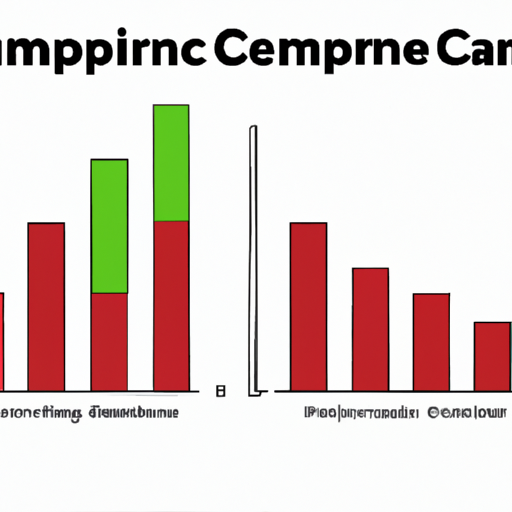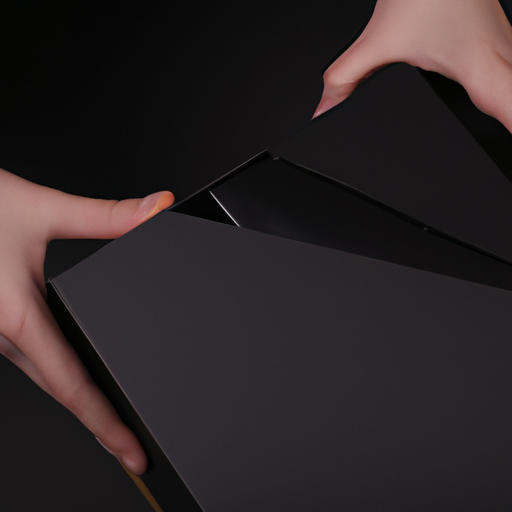Note: As an Amazon Associate we earn from qualifying purchases.
My first week with the new M3 Max Macbook Pro: Thoughts
Introduction
This past week, I’ve had the pleasure of putting the new M3 Max MacBook Pro through its paces. This machine is quite a powerhouse.
Prices
Check prices of the M3 Max Macbook Pro on:
Performance

My routine involves coding, video editing, and sometimes dabbling in machine learning, and this machine hasn’t broken a sweat. The new 3 nm chips from Apple represent not just an iteration but a significant leap ahead.
The M3 Max has an increased amount of performance cores. Using all 16 threads, I’ve experienced truly snappy performance, whether compiling code or rendering footage. The switch from 5 nm to 3 nm has resulted in an increase in energy-efficiency. The Geekbench scores I’m seeing echo what NotebookCheck detailed, and it’s not just numbers; I also notice the real-world impact (e.g. applications / sites opening faster).
When on a Docker project, I could run multiple containers simultaneously and still not miss a beat when I switched tabs to about 30 open browser windows. This is not just because of power but also intelligent power distribution through the Automatic mode which dynamically adjusts energy allocation. Even when pushing heavy algorithms through Python scripts or running intensive applications, the device stays quiet.
I remember reading about the M1 chips on Apple’s developer forum, where users sounded off on its ability to handle heavy loads with minimal thermal throttling. It seems Apple listened and ramped it up even further with the M3 Max. In my work loads it consumes 56 Watts at its peak and the Cinebench R23 Multi tests seem to demonstrate a 63% improvement over its predecessors.
It’s not just about the increased core counts; the 120Hz Mini-LED display is beautiful too. As someone who cares a lot about the visual output—whether I’m line-by-line debugging code or gaming —the combined CPU-GPU performance is very good.
As mentioned in NotebookCheck’s review, the Apple M3 Max 16-Core beats Intel’s H45 CPUs and is on-par with the hefty HX CPUs from AMD and Intel. That I’m seeing these returns without the power drain commonly associated with such performance levels I find pretty incredible (for a related look at the M2 Ultra - check out my reflections on Apple’s new M2 Ultra.
As for connectivity, the Thunderbolt 4 ports help me transfer data fast and hook up to multiple external displays (up to 4 on the M3 Max). Hence, the M3 Max MacBook Pro delivers a great use case for power users.
Day-to-Day User Experience

One of the first things I noticed was the SDR brightness upgrade on the 16-inch Mini-LED screen. Whether I’m editing photos or just browsing the web, the vivid colors and crisp details make everything pop. Plus, with 600 nits of brightness, outdoor use is now a viable option without squinting into the screen.
The keyboard and trackpad experience is unchanged, which is fine because they were already top-notch. The keyboard’s tactile response and the trackpad’s precision make them a dream to use. Combine this with macOS 14 Sonoma and you’ve got a fluid user experience that just gets out of the way and lets you work.
As I mentioned earlier, as someone who juggles multiple resource-intensive apps throughout the day, the 16-core CPU on this machine is a game-changer. Coding on Xcode and Python, running simulations, compiling data, concurrently with a 4K video render in the backdrop, and not a single stutter – that’s the difference more CPU cores make. This thing chews through tasks that used to bottleneck my workflow. The GitHub repositories for some software I develop are now created with much more efficiency, and it feels like you’re only limited by your own speed of thought when using this machine.
I also jumped to a massive 8 TB SSD of storage - the amount of data I can now store locally without worrying about external drives is great. For instance, this is on par with the *Samsung 990 Pro 4TB SSD* I recently upgraded to, which has significantly improved my data transfer speeds and overall system responsiveness. I’ve got virtual machines, large video files, and extensive libraries of high-resolution images on hand, none of which scratch the surface of the available space.
Battery life is also phenomenal. I can get through most of my workday on a single charge. Thanks to efficiency cores, you’re not constantly strapped to a power outlet, which means I can actually move around for meetings or find a new setting when the office walls start closing in.
Having Thunderbolt 4, HDMI, and an SD card reader makes connecting peripherals and transferring files a breeze. The HDMI 2.1 port’s capability to support an 8K external display at 60Hz is overkill for my current needs, but it’s comforting to have this as I may upgrade to one in the future.
Finally, Wi-Fi 6E connectivity has made a marked difference in network speeds, ensuring that my video calls and cloud-based workflows are seamless and glitch-free. I don’t miss the latency of my old machine, and large downloads are now a brief task.
Unboxing and First Impressions

Unpacking the new Apple MacBook Pro 16 2023 M3 Max is a good experience as Apple pays a lot of attention to packaging what they sell. The new Space Black color variant carries an aura of sophistication that Apple is known for.
The finish of the aluminum chassis—premium is nice to the touch and solid. Popping open the lid, I was greeted with that familiar glow of the Apple logo and then came the actual power-up. The 16-inch Mini-LED screen flickered to life, showcasing its colors at a brilliant 600 nits (up from 500) of SDR brightness. It’s a thing of beauty for my late-night coding sessions and video editing work.
The new M3 Max SoC, with its innovative 3 nm technology and up to 16 CPU cores, is like having a portable supercomputer at your fingertips. I read up on the Apple’s new M3 chips announced a few weeks ago and it’s impressive to see such power efficiency in a mobile chipset.
The RAM options with up to a whopping 64/128 GB configuration left me with no doubts that this machine was going to handle everything I threw at it. And storage goes up to 8TB.
As I plugged in the new laptop for its first charge, I noted the Thunderbolt 4 ports to continue to use my existing dock without a hitch.
The chiclet keyboard is great too. The familiar layout was expected, yet it was the tactility that continued to impress. It’s evident that Apple stands behind its reputation for building devices that cater to both the aesthetic and tactile preferences of their users.
I immediately took to the 30-core GPU version of the M3 Max, curious to see if it could handle my extensive editing and rendering workloads. Plain text and research papers are one thing, but the real test comes with 4K video timelines and large databases being parsed in real-time. As a side note, keeping up with the development community discussions on GitHub is evidence that I’m not the only one putting these specs under scrutiny.
I then checked the thermals, and during those first few hours of pushing the MacBook Pro, heat management seemed top-notch, making me even more eager for the Performance Deep Dive. What can I say? I’m a geek at heart, and watching those performance cores light up without the chassis burning up is pure joy.
As I wrapped up the unboxing, firing up some audio through the six-speaker system, it’s clear that Apple has simultaneously satisfied my inner audiophile. The 3D audio felt immersive, a nice touch for a power user who also values entertainment quality.
Value and Competition Analysis

Its value proposition is complex, especially when looked at through the lens of competition.
In the realm of high-end prosumer laptops, Apple’s M3 Max stands out—not just in its design but in practical performance. I often found myself in awe at the 16-core CPU, which sliced through demanding tasks like video encoding and 3D rendering like a hot knife through butter. It’s not just the number of cores that’s impressive, but the smart use of performance (P) and efficiency (E) cores, balancing power consumption with brute force.
Coming from an M2 Max, the leap in performance was noticeable even in day-to-day tasks that are less CPU-intensive. The responsiveness when switching between apps and the swiftness with which photos load and edit is just… chef’s kiss. And can we have a moment for the 128GB of RAM and the jaw-dropping 8TB SSD option? That’s a serious nod to power users who scoff at the mere thought of external drives.
Yet, even as a self-confessed Apple aficionado, I recognize the breathtaking cost of such a laptop. With maxed-out configurations going up to just over $7,000, it’s an investment that won’t make sense for everyone, but for those who can leverage this level of performance for professional creative work or software development, it’s a compelling case.
When it comes to alternatives, there are Windows machines like the Razer Blade 16 or the Lenovo Yoga Pro 9i 16. Both have their merits and come equipped with serious graphics and CPU performance themselves. But it’s Apple’s integration of hardware and software, thanks to macOS, that continues to make the MacBook a great device for creators and developers—especially those working with iOS and macOS
Though one might balk at the price, it’s essential to consider the build quality and SSD speeds that keep Apple firmly in its own lane, setting benchmarks for what a premium laptop experience can be. The 600-nit SDR brightness of the stunning Mini-LED display and impeccable audio quality from the six-speaker setup create an immersive experience that is tough to find on other laptops.
The bottom line is all about how much worth you put on craftsmanship, cohesive user experience, and sheer firepower. In an era when tech products are often fleeting and without soul, the MacBook Pro 16 M3 Max exudes a timeless quality, seemingly engineered for those who demand excellence without compromise.
For me, the M3 Max is not just another laptop but a testament to what’s possible when a company refuses to settle for mediocrity. For power users who can justify the investment, this MacBook isn’t just a tool; it’s a true portable powerhouse for creativity and productivity.